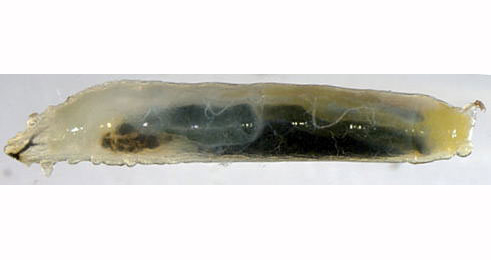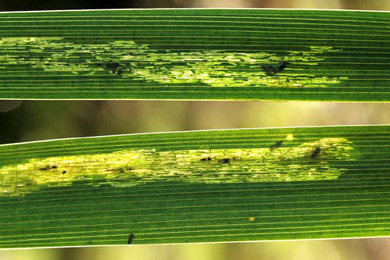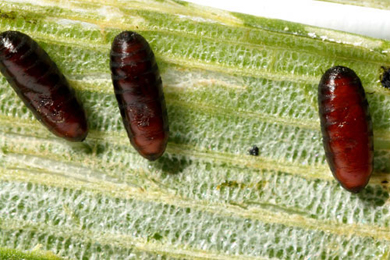|
||||||
|
IRIS. Irises. [Iridaceae] |
|
|
Nineteen species of Iris are recorded in Britain. These include the native Yellow Iris (I. pseudacorus) and Stinking Iris (I. foetidissima) and the introduced Blue Iris (I. spuria). Three British miners are recorded on Iris. A key to the European miners recorded on Iris is provided in Bladmineerders van Europa. |
 Yellow Iris Iris pseudacorus |
Key for the identification of the known mines of British |
1a > Leaf miner / Stem-borer: Narrow gallery in a young leaf. After having mined for some time the larva becomes a borer in the stem or rhizome. The larvae feed inside the stems. |
|
Orthotelia sparganella (Thunberg, 1788) [Lepidoptera: Glyphipterigidae]. |
1b > Leaf miner: A short white mine. Pupation in mine (Spencer, 1976: 217, 219 (fig. 376)). Irregular corridor, essentially parallel to the leaf blade. Mine white when seen from above, uniformly greenish when seen by transparency. Frass in one, rarely more, big black lump. Larva solitary. Pupation in the mine; puparium parallel to the leaf venation. Short, longitudinal blotches - often coalescing to make longer mines or wider mines or both. |
 Cerodontha iraeos larva, lateral Image: © Willem Ellis (Bladmineerders van Europa) |
|
Cerodontha iraeos (Robineau-Desvoidy, 1851) [Diptera: Agromyzidae]. |
1c > Leaf miner: A number of larvae feeding together to form a conspicuous, mottled greenish mine. Pupation laterally across the leaf at end of mine (Spencer, 1972b: 100). Two to 12 eggs are separately inserted in a leaf, not far from the apex. The young larvae begin making a short, narrow, corridor that runs upwards. Soon the direction reverses, the corridors quickly become wider and fuse. The result is a large blotchy mine, generally containing several larvae. The mine is very inconstant in depth, making it vary, when seen by transparency, from green to almost vitreous. Mines contain several lumps of frass. Pupation in the mine. The pupariria lie close together in a row, in the lowest part of the mine, oriented perpendicularly to the leaf. Forms a blotch mine, which may be large when several mines coalesce. |
 Mines of Cerodontha iridis on Iris foetidissima Image: © Gabrijel Seljak (Bladmineerders van Europa) |
 Cerodontha iridis pupariria Image: © Willem Ellis (Bladmineerders van Europa) |
|
Cerodontha iridis (Hendel, 1928) [Diptera: Agromyzidae]. |
| Last updated 05-Jul-2019 Brian Pitkin | ||
